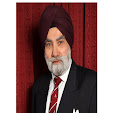Even a casual study of Sikh history shows that the real sufferers behind the scenes during the toughest and the most decisive period of Sikh history were Sikh women. This testing period after Guru Gobind Singh Ji (1708) lasted till the death of Mir Mannu in 1753. The survival of Khalsa Panth was decided during these 5 decades.
Backing the Sikh warriors were the Sikh women who walked in the footsteps of Mai Bhago. One historian writes: “All differences which arise between man and man in time of peace were effaced beneath the terrible levelling of the oppressor; all men had become brothers and all women sisters. An iron will, an unbent spirit and unbound enthusiasm for their faith were the rewards of this mode of living.” (Hari Ram Gupta, “History of the Sikhs Vol II p.62)
Another important characteristic of Sikh life has been their firm belief in daily prayers. “Ardas was the famous prayer regularly resorted to by the Sikhs, It reminded them of their goal and the sacrifices already made by the Gurus and other notable Sikhs for the sake of religion.” It is in this historical context that the word “Singhania” became inseparably attached to “Singh” as part of the Ardaas: “Jinha Singh Singhna ne dharam het sis ditte…”. The historical truth about the role of women becomes crystal clear when one visits the Gurdwara of Mai Bhago near Bidar (Nanak Jhira).
After Guru Sahib’s departure to Sach Khand, Khalsa protection was sought by a local ruler and Mai Bhago went with a detachment of Singhs to help. She later passed away at that fortress-like place; the old walls and a well are still there.
Sikhs survived the most trying period in history because they had the added human-power of their determined mothers, sisters and wives, who, in addition to their domestic roles, became equally good at the plough and the sword! More so as a matter of necessity during those dangerous times in the absence of men for prolonged periods. (I have seen those women in childhood in Malwa – tall and majestic - doing almost all the daily chores of farming, like men.)
It is not for any Sikh institution today to deny the daughters of Mai Bhago, their historical right to do seva at Darbar Sahib and in gurdwaras. That seva was accepted and blessed by the Guru Himself.
Many current issues relating to the position of women are inter-related. These are not so much religious questions but have to do with our social background from the Indian sub-continent. Our social bias against equality of women reflects the Indo-semitic social tradition which treats women as inferior to men – almost as if women were the property of men – a social injustice, which, like the Brahmanic caste system, Guru Nanak Sahib rejected.
The objection to religious seva by women, the dowry system and other social customs and rituals which treat women as if they were there only to serve men, and even the female infanticide and the so called “honour killings” of women, are related issues. Sikh teachings strike the right balance between the roles of men and women in a household. However, in practice, we are way behind those teachings, which the Khalsa Panth embodied in the Sikh guidance, the Sikh Reht Maryada.
The Sikhs led by Brahmanic sant-waad, which otherwise thrives on massive following by women, have not escaped the strong influence of social biases in the Indian system. Certainly, in Sikhism, these issues have very little to do with Sikh ideology, which is clear about the equality of women, while confirming the complementary roles of men and women. The question has to do with the general position of women on the Indian subcontinent.
For over 500 years before Guru Nanak Sahib, Islam had been the dominant influence. People copied the Islamic practice and women were hidden behind the “parda”, which the Guru rejected. With Guru Amardas, women began to play an increasing role in the man dominated world, including full participation in religious matters. Women preachers were appointed by Guru Amardas. Is that not religious seva? Just compare that with the ignorance about Sikh tradition now being shown by those misled by “Sant Samaj” – an organisation the very foundation of which is an insult to the great liberating Sikh tradition.
The position of women had so evolved according to Sikh tradition, that after Guru Gobind Singh Ji, Khalsa Panth had no qualms accepting guidance from Mata Sunder Kaur Ji (more popularly known as Mata Sundri Ji). Mata Ji’s Hukamnamas during the most challenging period in Sikh history are on record and decided the future of the “Tatt Khalsa” vis vis the false path taken by the followers of Baba Banda Singh Bahadur.
The grave danger is that instead of the balanced and complementary role advocated by Sikhi, the pendulum is already swinging dangerously the other way and young Sikh girls are rejecting Sikh tradition altogether. The damage being done by our misguided anti-Sikhi institutions is immense and may have a lasting impact on the next generation.
Only Gursikh mothers and sisters can save the situation by educating their children in the true Sikh tradition, which respects and fully accepts the key role of women in Sikh family life and their equality in public life.
Gurmukh Singh
E-mail: sewauk2005@yahoo.co.uk
© Gurmukh Singh
Subscribe to:
Post Comments (Atom)

No comments:
Post a Comment